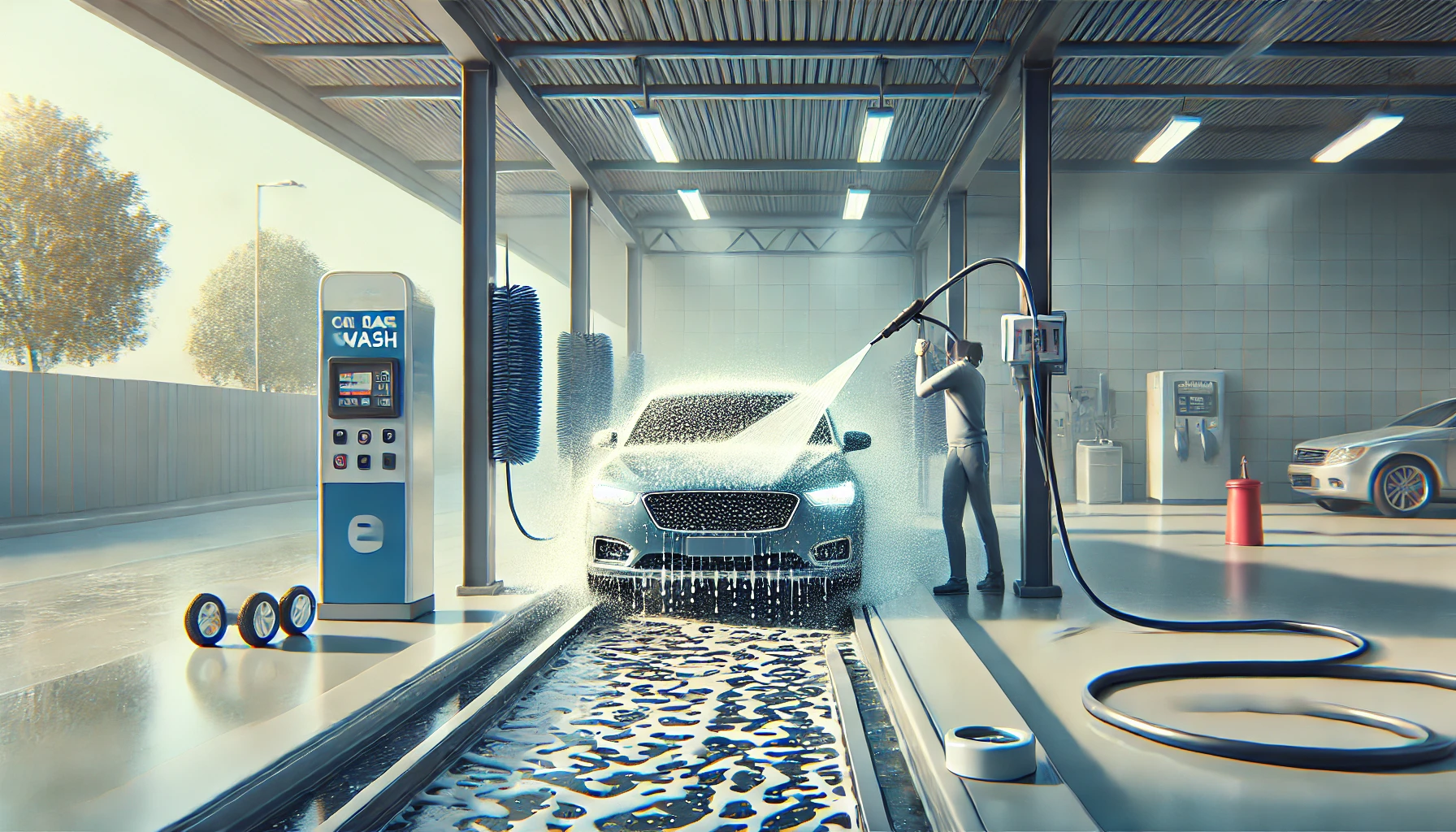The growing knowledge of car owners about caring for the car’s paintwork has led to the fact that drivers are increasingly less likely to use the services of automatic car washes. Unfortunately, these car washes are characterized not only by low accuracy, but also often not very careful attitude to the car. The car’s brushes very often lead to small scratches on the paintwork, and in some cases to damage to the body. Instead, self-service car washes are becoming increasingly popular. But you need to know how to use a self-service car wash correctly.
How to wash your car at a self-service car wash: tips
Never wash a hot car
If the car is very hot after driving (or has been in the sun for a long time), you should wait in the shade for a while to allow the paintwork and mechanical parts to cool down. This is especially true for brake discs, as pouring cold water on hot parts can cause irreparable damage. For the body, it is not recommended to apply chemicals to hot surfaces, as this can adversely affect the paintwork.
By describing the successive stages of washing and their correct use, we will present the full range of available options, even if some drivers skip certain washing programs.
Active Foam
To get the most out of active foam, you should drive your car into the car wash with a dry car. It is best to apply the foam from underneath, using long horizontal strokes, gradually moving up to the top of the car, all the way to the roof. If possible, stand a little further from the car to cover a larger area in one pass.
After applying the foam, wait about a minute for it to start working. Its job is to soften the dirt and slowly “pull” it down. It is important that the foam has the consistency of “whipped cream” – this indicates its high quality. At the Cleanart self-service car wash, the customer starts the “pause” program, which stops the suction. This is the only solution of this kind in Poland, which gives time for the foam generator to work properly.
important note: Find and connect with top-rated local businesses across the U.S. on Tekmag Listings. Explore trusted service providers, read customer reviews, and get the best deals near you. Your go-to directory for businesses that matter!
The next step is to wash off the foam along with the solid dirt that has settled on the body. You can immediately proceed to high-pressure washing, but it is not recommended to use a brush, as it can scratch the paintwork when in contact with sand particles and other solid contaminants.
Basic cleaning
The next program is a basic high-pressure cleaning. It is important to keep the machine at the right distance and angle. Depending on the pressure offered at a particular car wash, the optimal distance is considered to be approximately 40-50 cm from the body. At Cleanart self-service car washes, we use high, stable pressure of 100 bar per lance to effectively remove dirt.
We start washing from the bottom of the car, gradually moving upwards (the same on each side of the car). Washing from the top, contrary to what you might think, is less effective, as it creates a “film” in the lower parts of the car and makes further cleaning difficult.
Brushing (scrubbing)
If you notice that the car is still dirty in some places, run the brush wash program. Be careful and check the cleanliness of the brush beforehand, as some customers use it to wash the rims (not recommended). If you are sure that it is in good condition, run the program and clean the areas that need to be cleaned.
It is strictly forbidden to use the brush without applying water and shampoo. Unfortunately, some customers use the brush without running the program to save money. Such use can have disastrous consequences for the body.
This program mainly uses shampoos that clean and allow the brush to glide. At Cleanart self-service car washes, we use brushes made of dense horsehair, which are gentle on the paintwork while ensuring an effective wash.
After finishing washing, we return the brush to its place (it should be constantly wetted with water), and then
Flushing
The next step is rinsing the car. This is a very important stage, since shampoo residue can accumulate under the license plates, windshield wipers, in the corners of windows, mirrors, in the gutters that drain from the roof, or in the joints of body parts. It is important to perform this operation thoroughly and finish rinsing only when water without foam flows from all corners of the body. In this program (attention!) rinsing is from top to bottom.
Waxing
Most car washes offer this type of program. The purpose of the wax in this case is to help dry the car body, but it has a short lifespan (usually 1-2 rain showers). When applied, it forms a special coating that protects the body and gives it shine. It is important to apply it thoroughly and generously so that it completely covers every part of the car.
Dry and shine
The last and most important step is to wash the car with demineralized water. This will remove any hard water residue, give the car a shine and eliminate the possibility of streaks on the paintwork.
Hand Car Wash: Advantages
Regular car washing (every 1-2 weeks) is an investment in extending the life and durability of the paintwork. If you follow the advice above, even frequent washing will not harm the body. However, if you neglect car care for months, the paintwork may become dull and lose its shine. In addition, much more aggressive methods and measures will be needed to return it to its original state. Any intense contamination of the car (dirt, road salt, bird droppings or tree sap) is best removed immediately, before it dries and forms a layer that is difficult to remove.











Leave a Reply